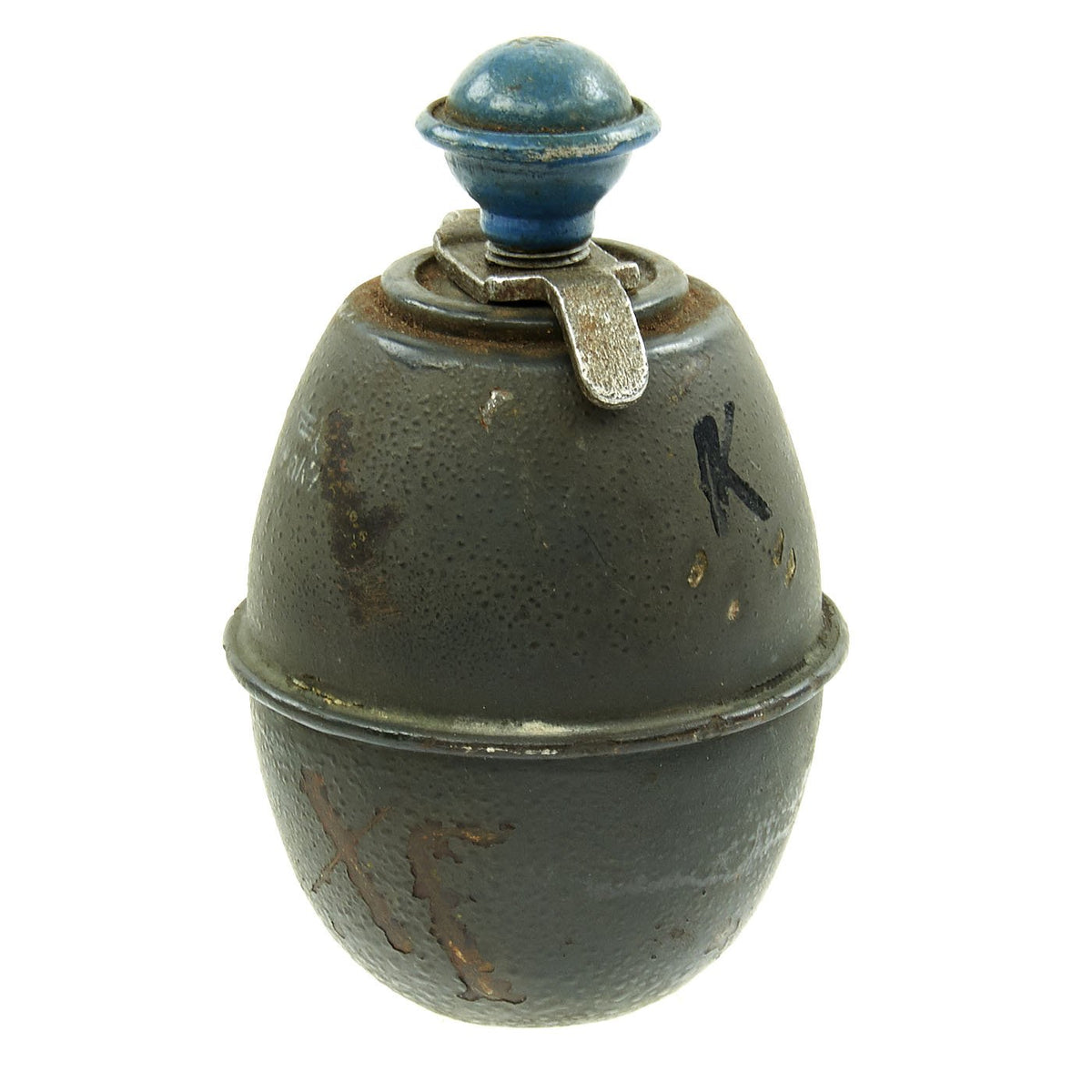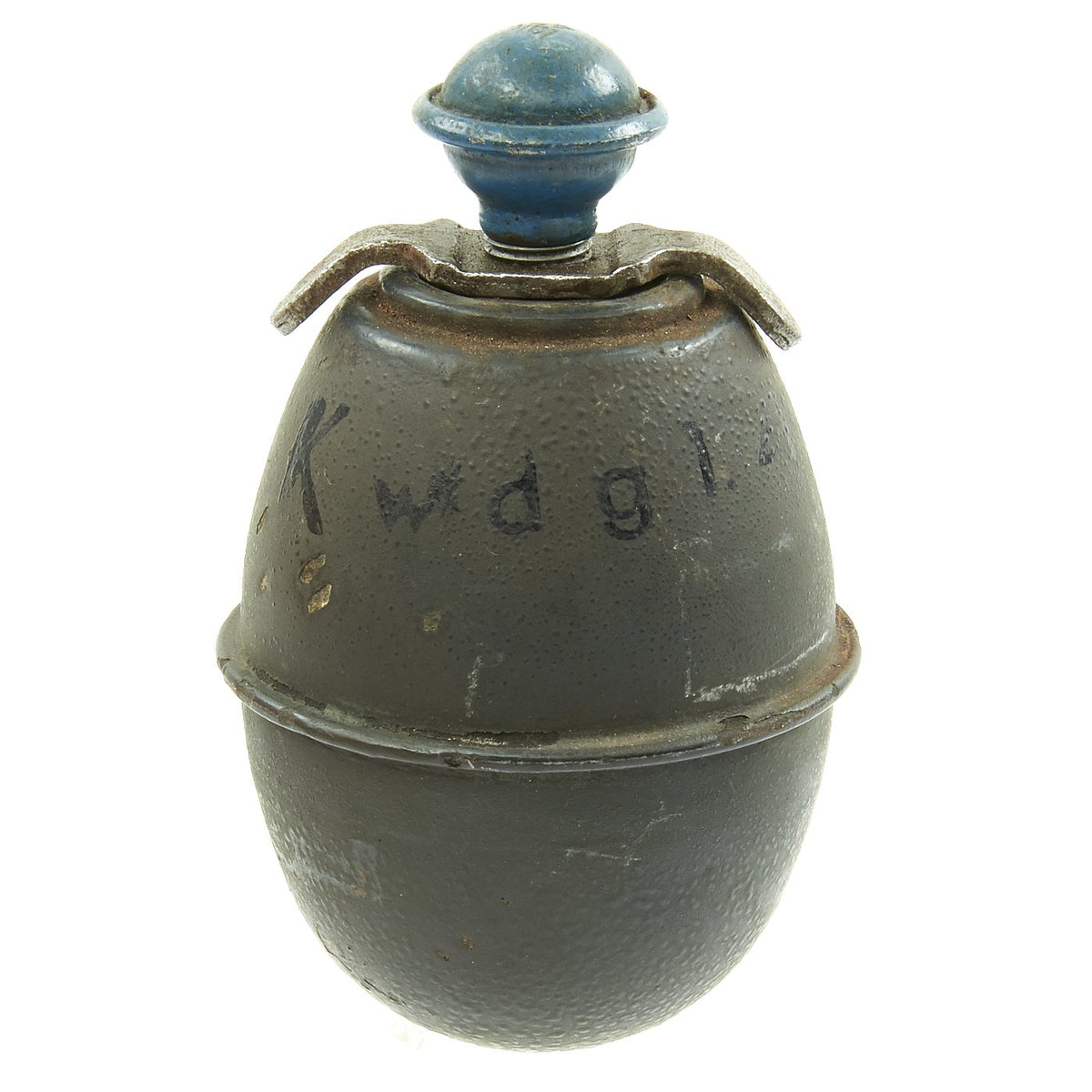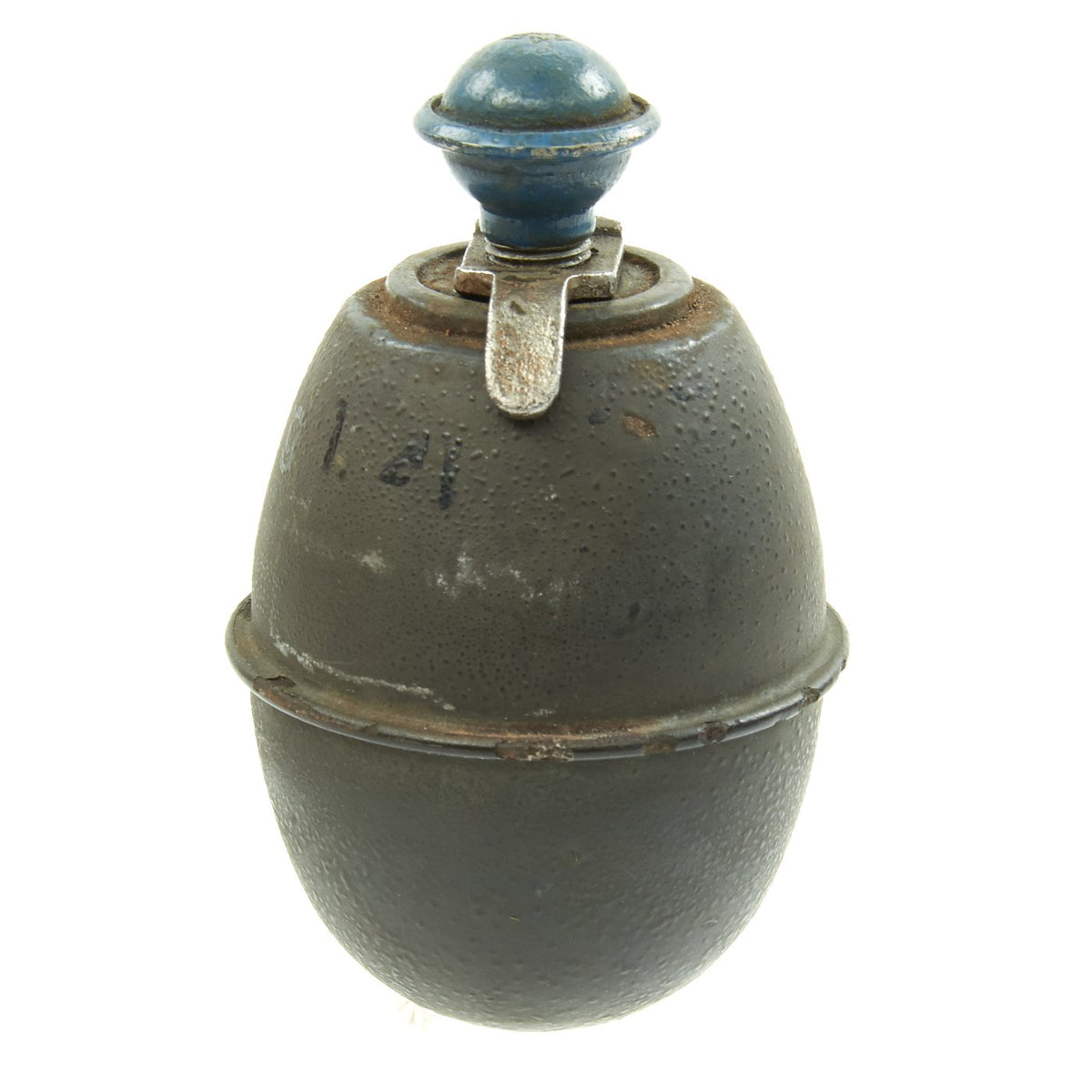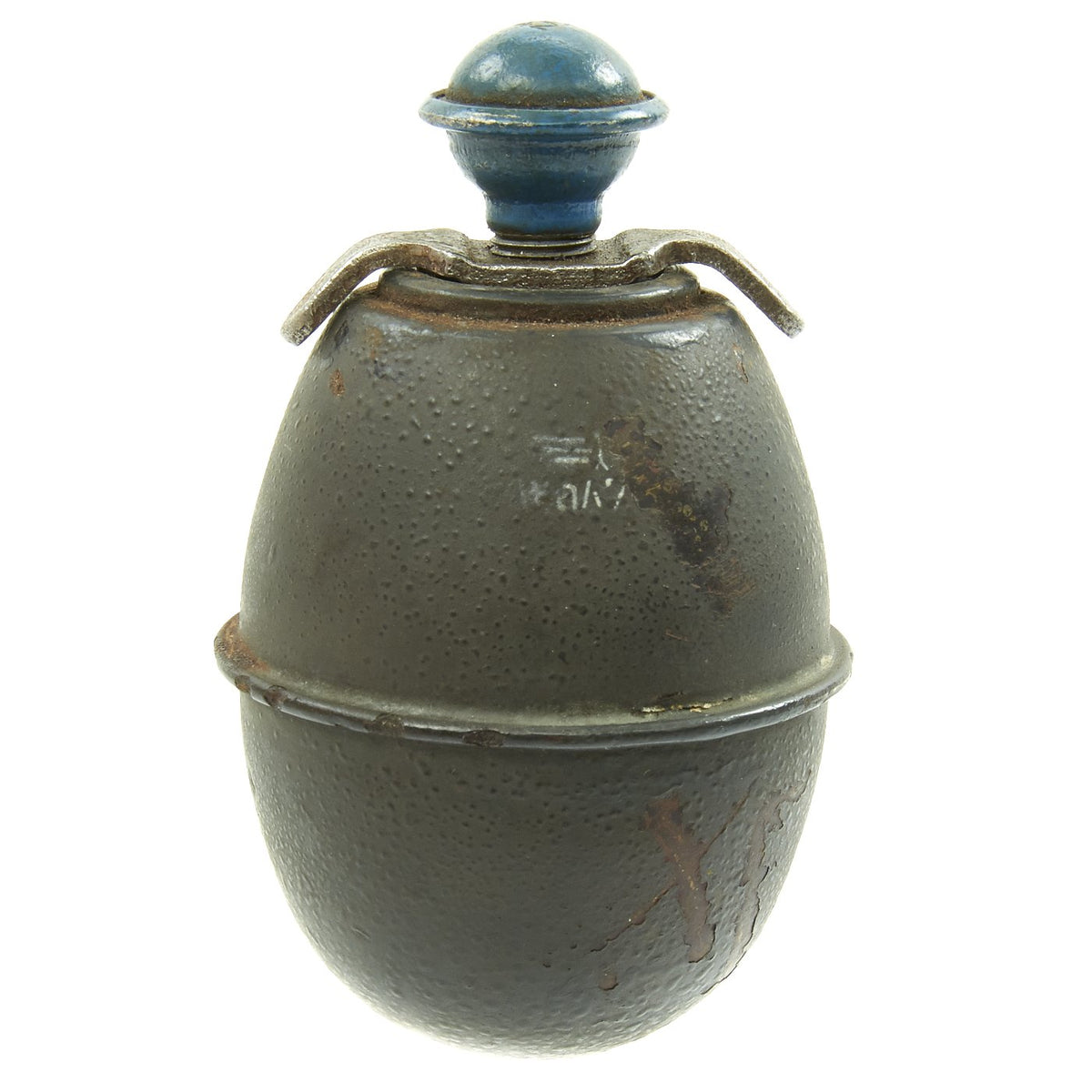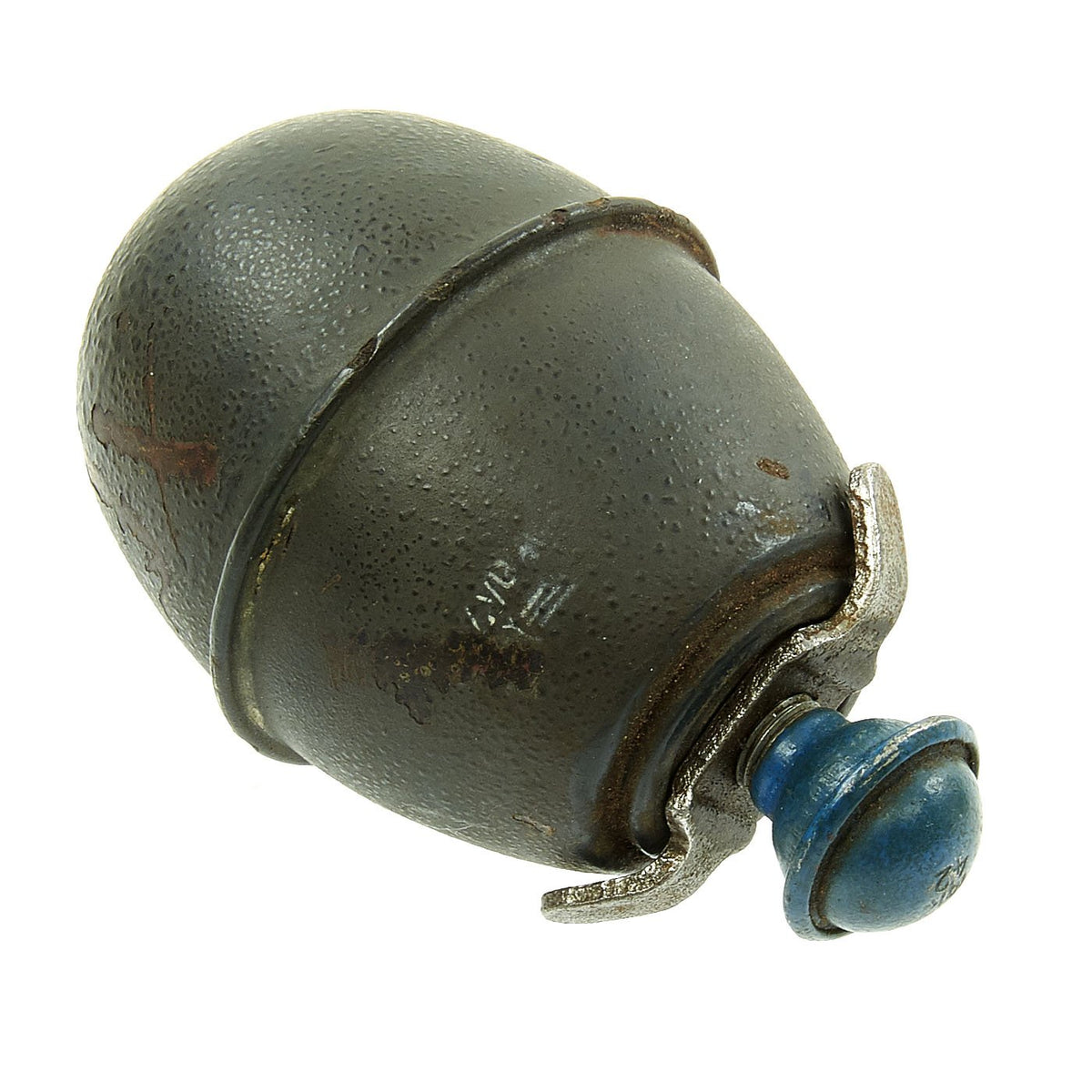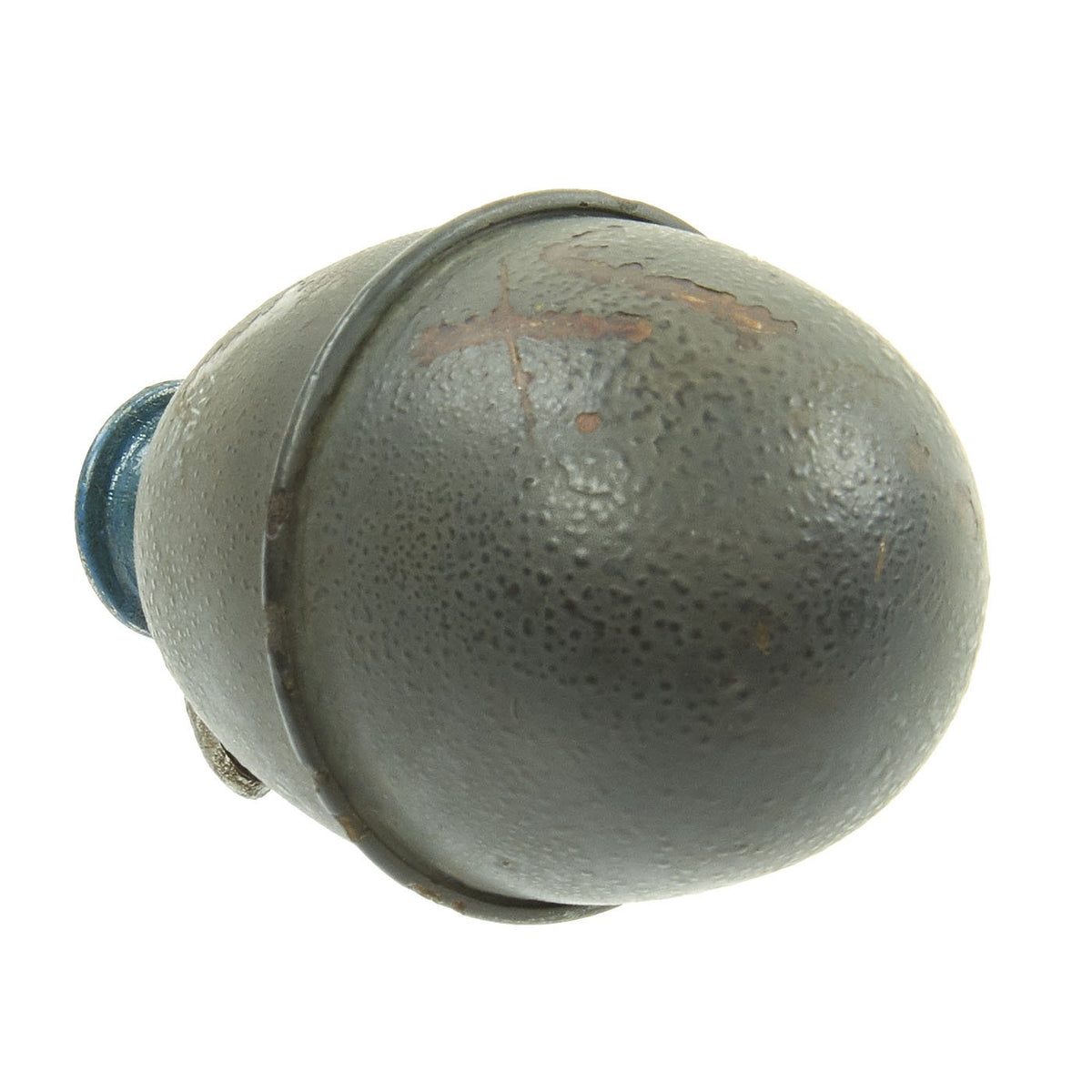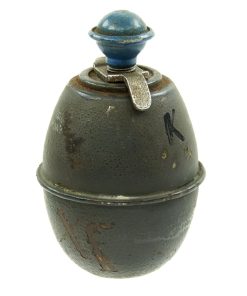Original German WWII 1940 dated Model 39 Inert Egg Hand Grenade with Waffenamt – Eierhandgranate Original Items
$ 325,00 $ 97,50
Original Item: Only One Available. This is one of the best examples of the extremely rare M1939, M39 or Eierhandgranate (egg hand grenade) that we have ever seen! It is in great shape, and has German WWII markings and dates all over! The grenade has been deactivated according to specifications provided by the ATF. It is totally inert, cannot be converted to an explosive device.
This example is in very good condition, with almost all of the original paint retained on the body, which still bears originally issue markings! The top is marked with a partial WaA Waffenamt inspection marking, and the bottom is marked with 40 eyu, for 1940 manufacture by contractor “eyu”, a maker code seen on many period grenades. Unfortunately we have not been able to identify this maker.
The grenade still has the original screw off “wings” as well as the blue fuze top, marked lqk / 42, for 1942 manufacture. We also have not been able to identify this maker, which could also be “lgk” or possibly another marking. There are many maker codes from WWII that have never been identified, which was the entire purpose of the naming system.
What really makes this grenade stand out is the ink markings on the side: K qw dgl. 41. This most likely indicates the date that the shell was filled with explosives, and gives specifications on the filling.
A totally honest original German Egg Grenade, in great condition with loads of markings. This would make a worthy addition to any grenade collection, ready to research and display!
The Model 39 Eihandgranate (or Eierhandgranate, “egg hand grenade”) was a German hand grenade introduced in 1939 and produced until the end of World War II. The Eihandgranate used the same fuse assembly (the BZE 39) as the Model 43 Stielhandgranate (“Stick Grenade”), which was screwed into the top of the sheet-metal body. To activate, the domed cap was unscrewed, and the pull-cord that had been coiled inside it was tugged sharply before throwing at the target.
The color of the cap indicated the burning time of the type of fuze fitted. Typically, a delay of around 4 seconds was used. However, if a grenade was to be used as a fixed booby-trap then an instantaneous fuse would be fitted. Enemy soldiers who found seemingly discarded grenades would attempt to use them (expecting a standard time delay) only to be blown up the moment they tugged on the pull-cord. Another scenario was to wire an instantaneously fuzed grenade to a door-frame in an abandoned building. Then the pull-cord would be attached to the door. When the door was kicked open by opposing troops the grenade would detonate.
Fuze Cap Colors:
Grey – zero delay (used exclusively for booby-traps and fuse ignitors)
Red – 1 second delay (for coloured smoke, but also booby-traps)
Blue – 4.5 second delay (this was the standard fuze and the one most commonly issued)
Yellow – 7.5 seconds
As grenades were disposable, encountering them on the market is very rare, especially with the original fuze in place, making this an excellent opportunity to acquire one to complete a WWII ordnance collection.
Fast Shipping with Professional Packaging
Thanks to our longstanding association with UPS FedEx DHL, and other major international carriers, we are able to provide a range of shipping options. Our warehouse staff is expertly trained and will wrap your products according to our exact and precise specifications. Prior to shipping, your goods will be thoroughly examined and securely secured. We ship to thousands clients each day across multiple countries. This shows how we're dedicated to be the largest retailer on the internet. Warehouses and distribution centres can be located throughout Europe as well as the USA.
Note: Orders with more than one item will be assigned a processing date depending on the item.
Before shipping before shipping, we'll conduct a thorough inspection of the items you have ordered. Today, the majority of orders will be delivered within 48 hours. The delivery time will be between 3-7 days.
Returns
The stock is dynamic and we cannot completely manage it because multiple stakeholders are involved, including our factory and warehouse. So the actual stock may alter at any time. It's possible that you may not receive your order once the order has been made.
Our policy is valid for a period of 30 days. If you don't receive the product within 30 days, we are not able to issue a refund or an exchange.
You can only return an item if it is unused and in the same state as the day you received it. You must have the item in its original packaging.
Related products
Uncategorized
Angolan Rebel 1970s era 60mm Inert Display Mortar from Angolan Civil War Original Items
Uncategorized
Uncategorized
Uncategorized
Uncategorized
Band of Brothers ORIGINAL GERMAN WWII Le. F.H. 18 10.5cm ARTILLERY PIECE Original Items
Uncategorized
Uncategorized
Uncategorized
Uncategorized
Uncategorized
Uncategorized
Uncategorized
Uncategorized
Uncategorized
Uncategorized
Uncategorized
Uncategorized
Uncategorized
